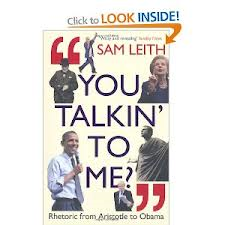Like many teachers, I have foregone the checklists of persuasive techniques that lead to clunky and ineffective writing. The trick for me is not to lump techniques into lists and deal with them in a job lot. It’s much better to spend whole lessons on the individual techniques themselves. You can teach them, look at multiple models and examples, then practise. This blog looks at some strategies to focus on for one of the staples of these lists: statistics.
Don’t leave them on their own
Like most rhetorical techniques, statistics don’t really work if they are just dropped randomly into a paragraph. Sometimes you can just stick them on their own on the side of a big red bus, but they are generally more useful if they are developed as part of a rhetorical flourish. Here are some examples of what I mean.
Statistic reframing
 In Notes from a Small Island, Bill Bryson writes the following about Blackpool: “It has the continent’s second most popular tourist attraction, the forty-two-acre Pleasure Beach, whose 6.5 million annual visitors are exceeded in number only by those going to the Vatican”. The 6.5 million annual visitors to Blackpool is interesting on its own, but when compared to the Vatican then it feels even more significant. Taking the statistic and framing it in another way gives added substance. To take Nate Silver in The Signal and the Noise slightly out of context, “The numbers have no way of speaking for themselves. We speak for them. We imbue them with meaning.” So, a good way to use a statistic is to frame it another way, something like: “According to Cancer Research, around 35 thousand people die each year from lung cancer. To put that into perspective, that’s the average attendance at White Hart Lane.” Here is another example from the Huffington Post: “In fact, the small preliminary study found that these young adults used their phones an average of five hours a day — that’s roughly one-third of their total waking hours.” In each instance, the statistic is brought to life by reframing it in some way.
In Notes from a Small Island, Bill Bryson writes the following about Blackpool: “It has the continent’s second most popular tourist attraction, the forty-two-acre Pleasure Beach, whose 6.5 million annual visitors are exceeded in number only by those going to the Vatican”. The 6.5 million annual visitors to Blackpool is interesting on its own, but when compared to the Vatican then it feels even more significant. Taking the statistic and framing it in another way gives added substance. To take Nate Silver in The Signal and the Noise slightly out of context, “The numbers have no way of speaking for themselves. We speak for them. We imbue them with meaning.” So, a good way to use a statistic is to frame it another way, something like: “According to Cancer Research, around 35 thousand people die each year from lung cancer. To put that into perspective, that’s the average attendance at White Hart Lane.” Here is another example from the Huffington Post: “In fact, the small preliminary study found that these young adults used their phones an average of five hours a day — that’s roughly one-third of their total waking hours.” In each instance, the statistic is brought to life by reframing it in some way.
Statistic stacking
I wrote more about this here, and it’s the way that we can take a statistic and make it bigger, like in this example from AIDS activist Mary Fisher at the Republican National Convention: “The reality of AIDS is brutally clear. Two hundred thousand Americans are dead or dying. A million more are infected. Worldwide, forty million, sixty million, or a hundred million infections will be counted in the coming few years.”
Another way to do this is to take a seemingly small statistic and grow it by adding time or quantity: “The typical can of cola has 35 g of sugar, which doesn’t seem much. However, over the course of a week, one can a day adds up to 245 g of sugar which builds to 12,740g over the course of a year – that’s 12 bags of sugar.” I have found that these structures can be used really well, although I do become a little frustrated when the calculators are out in my English lesson. You also need to explain why you can’t statistic stack percentages.
Donald Trump, in his State of the Union address, used a variation of this: “In 2016, we lost 64,000 Americans to drug overdoses, 174 deaths per day, seven per hour. We must get much tougher on drug dealers and pushers if we are going to succeed in stopping this scourge.”
Statistic + other
If you get students into the habit of thinking of statistics as never just the point in themselves, then you will encourage better writing. They can be combined with other rhetorical techniques:
Statistic + Rhetorical question: Emma Gonzalez, a student at Marjory Stoneman Douglas High School, following the recent mass shooting there, said the following at a gun control rally: “And divided by the number of gunshot victims in the United States in the one and one-half months in 2018 alone, that comes out to being $5,800. Is that how much these people are worth to you, Trump?”
Statistic + Anaphora: You could use a statistic at the start of multiple clauses or sentences. “The average young person spends 5 hours on their phone. 5 hours of Candy Crush and Farmville and Angry Birds. 5 hours of Whatsapp and Instagram and Snapchat. 5 hours where they are simply unconnected with the wonderful wide world around them.”
Keep them plausible
In the real world, it’s actually the slightly unbelievable statistics that are the most persuasive. When Bill Bryson writes about the 6.5 million annual visitors to Blackpool, we are fascinated precisely because it seems so implausible. Yet if a student uses a ridiculous sounding statistic in their writing, we immediately notice and it has the opposite effect – we simply doubt the statistic.
This therefore poses a problem for a pupil sitting an exam. You would reasonably expect a piece of rhetoric to include some facts and statistics, yet the exam question is very likely on a topic where they have little knowledge. If, for example, the question was on persuading young people not to eat fast food, you might take a guess at how much money is spent on fast food such as fried chicken (£2.2 billion in the UK, according to the BBC). You can’t expect knowledge of every statistic – journalists would look them up – but if we acknowledge that pupils will make them up, they should always ask if it’s plausible. If it isn’t, or they simply have no idea, then it might be better to use vaguer terms like ‘a huge number of children’, ‘thousands’ or ‘an increasing number’.
Keep them credible
In that last section, I gave a statistic about the money spent on fried chicken. I imagine that you just accepted it. Not because I told you about it but because I wrote ‘according to the BBC’. Having a credible source for statistics in a piece of writing helps to avoid thee statistics feeling just added in randomly. That statistic was actually taken from a research report by Mintel, but reported in the BBC – I knew the BBC had more credibility. Phrases that can be used: ‘According to…’; ‘A recent study by…’ etc. I often use models with students which look like this: ‘According to name, Professor of x at y University, …’ which lend credibility to the statistics. There are countless real world examples, like this one from Trust for London: “New research from Loughborough University shows that 41% of Londoners have less income than they need for what the public regard as a decent standard of living – that is one that allows them to meet their basic needs and participate in society at a minimum level. This is significantly higher than the 30% that fall below the standard in the UK as a whole.”
According to a recent survey, 110% of people loved this blog.
